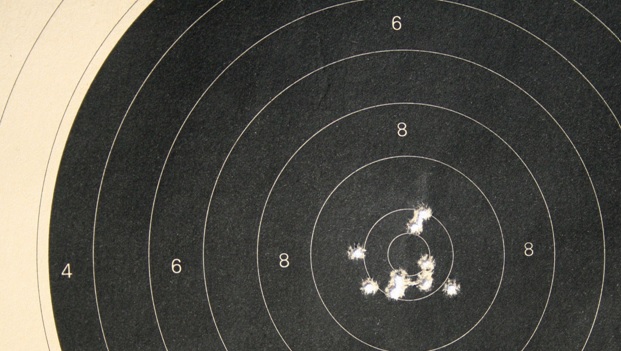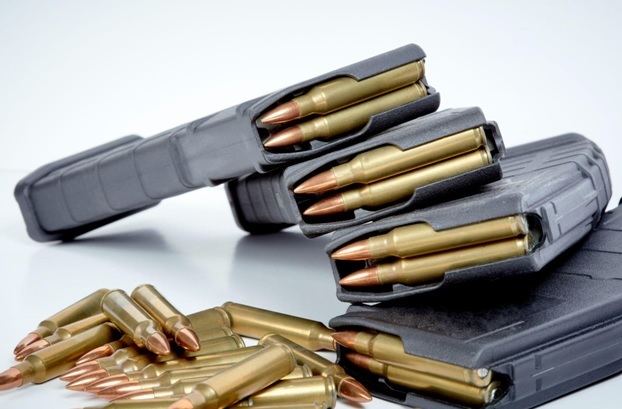Are there two cartridges in the world of shooting with more legendary status than either the .308 Winchester (corresponding roughly to the 7.62x51mm NATO) or the .223 (corresponding roughly to the 5.56x45mm NATO)?
Maybe there are. Then again, maybe there aren’t, and for most shooters, these are two of the most popular rounds out there with a number of practical uses that run the gamut from hunting to long-range shooting to competition and of course, defensive applications.
These are, without a doubt, two of the best, especially if you restrict the scope of the argument to rifle shooting.
On that note, if you’re thinking about going with a complete .308 upper receiver for your next build, here are a few things to consider regarding the differences between the two.
Size and Specifics
First, let’s just talk basics. The .308 Winchester is a much larger, heavier cartridge than the .223 Remington.
In terms of specifications, the .308 Winchester has a 2.8” overall length, with a 56 grain capacity; it is loaded with a .308” diameter bullet that usually ranges in weight between 110 and 185 grains.
As for the .223 Remington, it is a much smaller cartridge with a 2.26” OAL and a 31.4 grain capacity, loaded with lighter, smaller bullets, .224” in diameter and weighing between 40 and 77 grains.
Muzzle Energy
Given the larger bullet and greater case capacity of the .308 Winchester, it produces higher muzzle energies than the .223.
Let’s look at the smaller of the two first. Take, for instance, a 55-grain .223 bullet that produces a muzzle velocity of 3240 FPS. That bullet will leave the muzzle with about 1282 ft-lbs of energy.
Now, for a common .308 comparison. Take a 150 grain .308 bullet that produces 2820 FPS; that bullet will leave the muzzle with 2648 ft-lbs of energy, more than twice that of the .223.
Trajectory
All else being equal, the .223 produces a flatter trajectory than the .308 does. Both are decent long-range shooters, though, and the .308 retains enough energy downrange to dispatch medium and large game, within several hundred yards.
Let’s take the same load data mentioned above for the purpose of comparison, in which case both rifles would be zeroed at 200 yards. In the case of that .223 load, the bullet would drop 7” at 300 yards, 21.4” at 400 yards, and 45.9” at 500.
As for the .308 Winchester, that same round compared would drop 8.1” at 300, 23.6” at 400 and 48.3” at 500. Realistically, though the .308 drops more quickly, they’re both relatively flat shooters. The nod does go to the .223, however.
Ballistic Coefficient and Wind Drift
Ballistic coefficient is a measurement that basically gives a representation of how aerodynamic a bullet is. Generally, the higher the BC, the flatter the bullet shoots and the better it resists wind drift.
The .308 Winchester has a higher ballistic coefficient than the .223 Remington, in part because it shoots a heavier, more stable bullet. Though its trajectory drops more quickly, it is better able to resist wind drift.
Recoil
Not for nothing, but both of these cartridges produce very little recoil and for most shooters, it’s not something that you’d take into account, especially with an AR-style rifle with a smooth-shooting gas system.
However, it is worth bringing up the fact that even though neither of these cartridges produce a lot, the .308 produces way more than the .223.
First, a disclaimer. Recoil will depend on the load data, the weight of the bullet, barrel length, and of course, the weight of the gun, among other things.
But still, to speak averages, most .308 loads produce around 22 ft-lbs of felt recoil where the .223 produces something like a paltry 4 ft-lbs or so. It’s a huge difference between the two, even though objectively recoil is still minimal.
Accuracy
Both the .223 and .308 can be exceptionally accurate when paired with the right rifle. Within 500 yards, you’ll notice little difference in performance.
Here’s the thing, though. Due to the .308’s higher ballistic coefficient, it can maintain FPS beyond 500 yards, making it effective to 800, even in some cases to 1000.
This means that more corrections are needed when shooting a .223 at ranges in excess of 500 yards. They can both be effective, but to make short of it, the .308 is better for engaging targets at greater ranges.

Sectional Density
Sectional density is a metric that gives an indication of a bullet’s ability to penetrate a target. The heavier the bullet, and the smaller its diameter, the better it performs.
If you’re assuming the .308 has a better sectional density than the .223, you wouldn’t be wrong. The .308’s is .248 compared to the .223’s .164.
The long and short of this is: the .308 is better at penetrating targets than the .223, and it maintains this ability at greater ranges thanks to its greater mass and superior ballistic coefficient.
Ammo Price and Availability
Before buying a complete .308 upper and starting off with a build, you should also take some time to consider the price and availability of the cartridge around which you’re going to make the rifle.
Let’s say both cartridges, in this instance, have equal availability. That’s probably more or less true as they are each, in their own right, among the most popular centerfire rifle cartridges ever developed.
When it comes to price, the .223 is a winner. It is cheaper per round than even the cheapest .308 cartridges, and for what it’s worth, since the .223 is lighter and more compact, you can carry more of it, more easily, and more comfortably.
Start with a Complete .308 Upper Here

This article only offers a short exposition on the differences between these two extremely popular and highly accessible cartridges.
The truth is you’ll need to do some more soul searching before you know which one is right for you, in part because both of them are so useful.
In their own respective spheres, they can each be used effectively for hunting, defensive applications, competition, long-range shooting, and more. It all comes down to what sorts of performance you expect from the rifle you build.
Either way, we sell complete .308 uppers, along with 5.56 uppers here at MCS Gearup, in addition to lower parts kits and high-quality build kits. Get what you need here today and get in touch with us at Sales@MCSGearup.com if you have questions before you begin the project.

